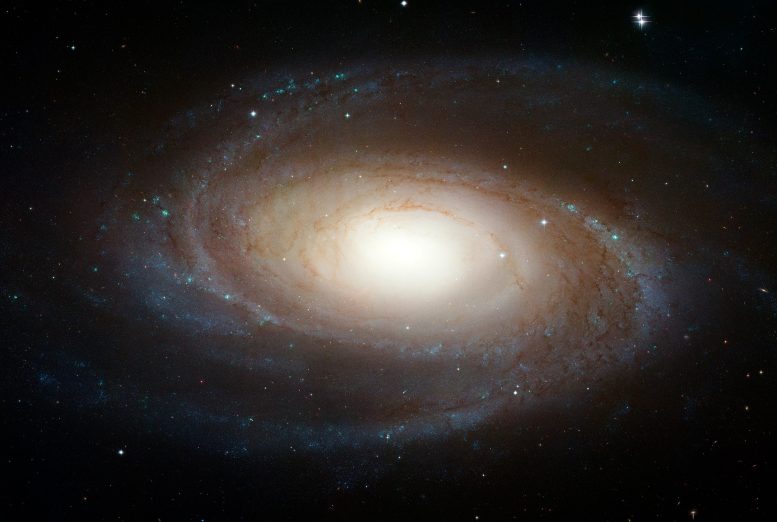
Hubble Space Telescope image of the large “grand design” spiral galaxy M81. A spiral-shaped system of stars, dust, and gas clouds, the galaxy’s arms wind all the way down into the nucleus. Though the galaxy is located 11.6 million light-years away, the Hubble Space Telescope’s view is so sharp that it can resolve individual stars, along with open star clusters, globular star clusters, and even glowing regions of fluorescent gas. Credit: NASA, ESA and the Hubble Heritage Team (STScI/AURA). Acknowledgment: A. Zezas and J. Huchra (Harvard-Smithsonian Center for Astrophysics)
What are some skywatching highlights in February 2024?
Venus begins its exit from the morning sky, as Mars makes its comeback. Plus, now through May is a good time to observe spiral galaxy M81.
What to Look for:
Shifting planets and a spiral galaxy
Venus is beginning its exit from morning skies this month, just as Mars returns to visibility. Jupiter and the Moon make a cute couple on Valentine’s Day. And point your telescope near the Big Dipper to seek out M81, aka “Bode’s Galaxy.”
February skywatching highlights:
- All month – Venus is still brilliant in the eastern sky before sunrise, but it’s sinking lower each day, so catch it while you can!
- All month – Mars is starting to be visible in the predawn sky. It’s quite low, and not super bright yet, but watch it get higher and brighter over the next few months.
- February 6 – Spot Venus together with a slim crescent Moon in the east this morning, just as the sky starts to brighten.
- February 9 – New moon
- February 14 – This evening, look for the crescent Moon very near to Jupiter, high in the southwest following sunset.
- February 22-28 – This week, those with an unobstructed view toward the southeast horizon can look for a close approach of Mars and Venus as the pair are rising.
- February 24 – Full moon
- All month – Observing one of the most famous “faint fuzzies,” M81, is relatively easy over the next few months, through around May. The Big Dipper can help you locate this distant spiral galaxy, which you can see with a small telescope or even binoculars.
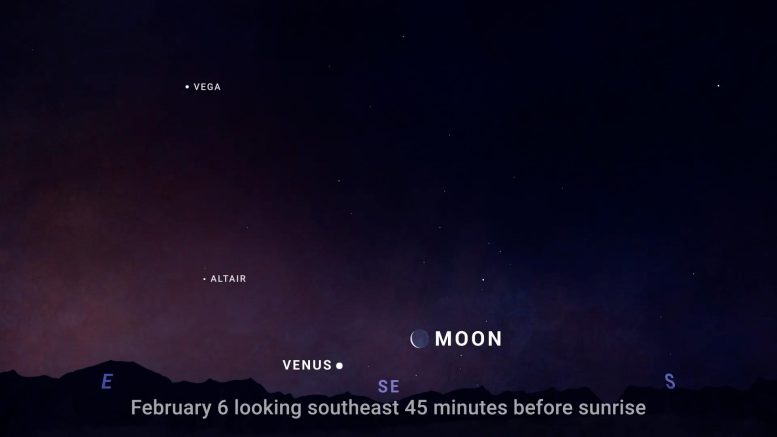
Sky chart showing Venus with the Moon on the morning of February 6, 45 minutes before sunrise. Credit: NASA/JPL-Caltech
Video Transcript
What’s Up for February? Venus and Mars make quite the pair, Jupiter and the Moon are each other’s Valentine, and observing M81, aka “Bode’s Galaxy.”
Venus is still a brilliant beacon in the morning, rising in the couple of hours before the Sun. It has been steadily sinking lower in the sky for the past couple of months, though, and by the end of February it’s pretty much getting lost in the light of sunrise.
It will start making its return as an evening sight in July. You can catch the bright planet together with a slim crescent Moon on the morning of February 6th, just as the sky starts to brighten.
Next, Valentine’s Day brings a nice pairing to enjoy with someone special. That evening, look for the crescent Moon near Jupiter, high in the southwest following sunset. They’re just a couple of finger widths apart on the sky, meaning most binoculars will show them in the same field of view.
And speaking of the Moon, NASA’s VIPER moon rover is planned to launch later this year, and you can send your name to the Moon along with it! Visit nasa.gov/send-your-name-with-viper for details.
Returning to the inner planets, as Venus begins its exit, we find Mars returning to view. The Red Planet left the evening sky last September, passing through conjunction, where it was on the opposite side of the Sun from Earth, and thus not visible for a few months. It’s now just starting to be visible in the predawn sky. In February it’s quite low, and not super bright, but you can observe it brightening and rising ever earlier in the coming months. Those with an unobstructed view toward the southeast horizon can look for a close approach of Mars and Venus as the pair are rising during the last week of February.
February is a good time to view one of the famed “Messier objects” known as M81.
This is a spiral galaxy similar to our own Milky Way, but just a bit smaller, and it’s one of the brightest galaxies in the night sky. It’s located about 11.8 million light years away from us, which means, if you’re able to observe it, those photons of light hitting your eye have been traveling through space for more than 11 million years to reach you.
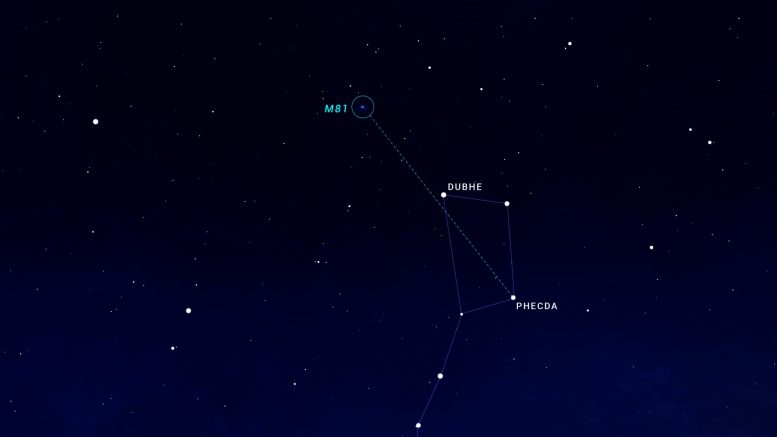
Sky chart showing where M81 is located in the sky, with regard to the Big Dipper asterism. Credit: NASA/JPL-Caltech
It was discovered by astronomer Johann Bode in 1774, which is where it gets its other common name, “Bode’s Galaxy.” At the time, it was simply cataloged as a nebula or faint, fuzzy patch. It wouldn’t be until the work of Edwin Hubble in the 1920s that many such faint, fuzzy objects were understood to be self-contained galaxies of stars, outside the Milky Way and incredibly distant from us.
M81 is a bit too dim to see with the unaided eye, but it’s visible with binoculars or a small telescope, where it appears as a dim patch of light. With a 6-inch telescope you can resolve the galaxy’s bright core, and with an 8-inch telescope, you can begin to make out the spiral arms.
Locating M81 is not too difficult, with the Big Dipper (or the Plough) to guide you. Starting with the star on the end corner, called Dubhe, imagine a line twice the distance from the star on the opposite corner of the Dipper, Phecda. Pointing your telescope or binoculars in that area ought to put you pretty close to M81. You might also notice its
faint, fuzzy companion nearby, which is M82. This is another galaxy, but seen edge-on, and it gets its other common name, the “Cigar Galaxy,” from this appearance.
This pair of galaxies is “circumpolar” in the Northern Hemisphere, meaning they rotate around the north celestial pole and never set. (Unfortunately, this means they’re not really visible from the Southern Hemisphere.) Although it’s visible all year in the Northern Hemisphere, from about February through May, you’ll find M81 high in the northern sky in the first half of the night, making it easier to observe.
So grab your telescope, or find a local astronomy event with NASA’s Night Sky Network, and check out M81, Bode’s Galaxy, a distant cousin to our home galaxy, the Milky Way.
Here are the phases of the Moon for February.

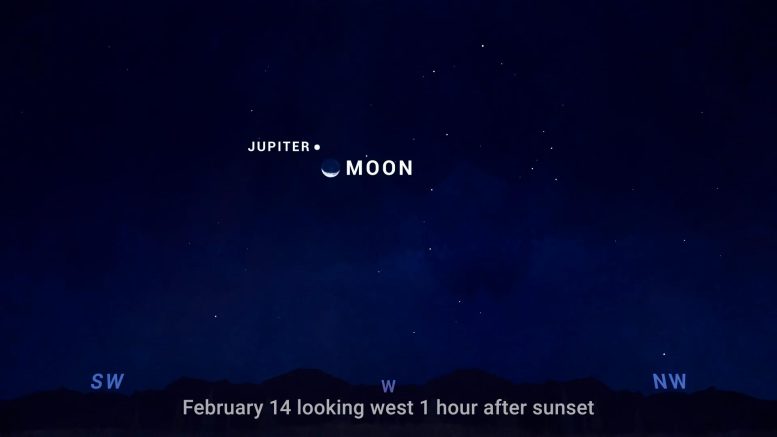
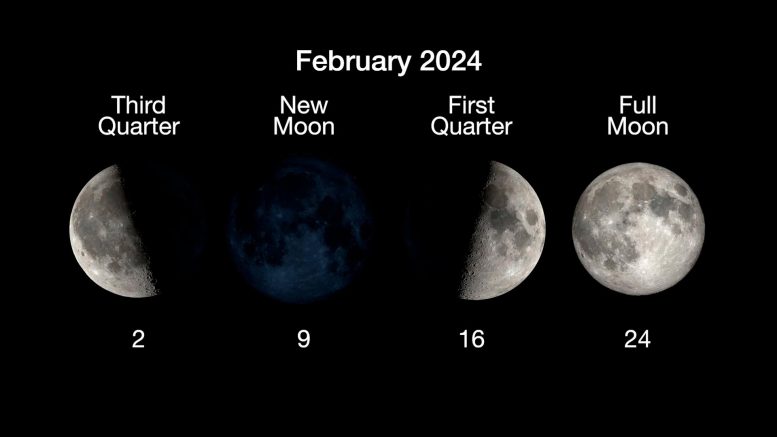








Be the first to comment on "Don’t Miss: Shifting Planets and a Spiral Galaxy"